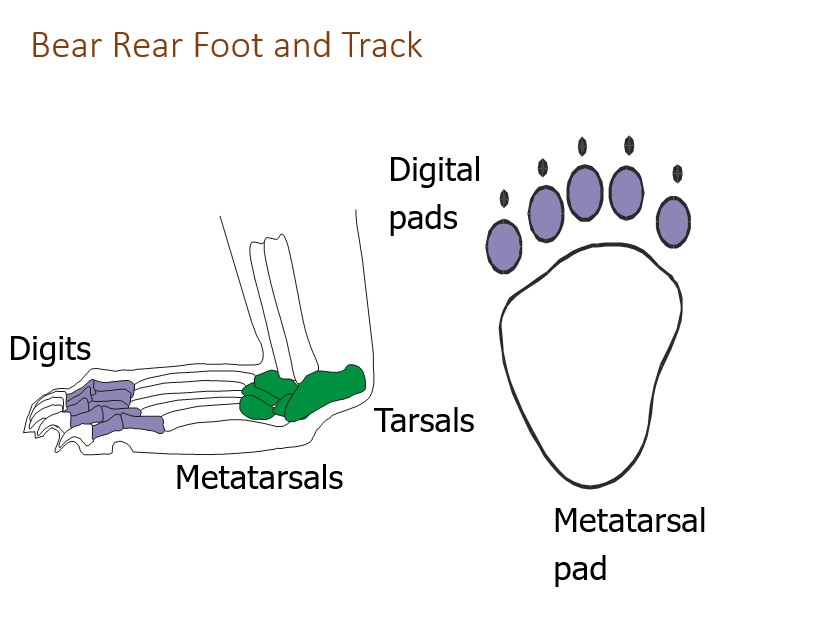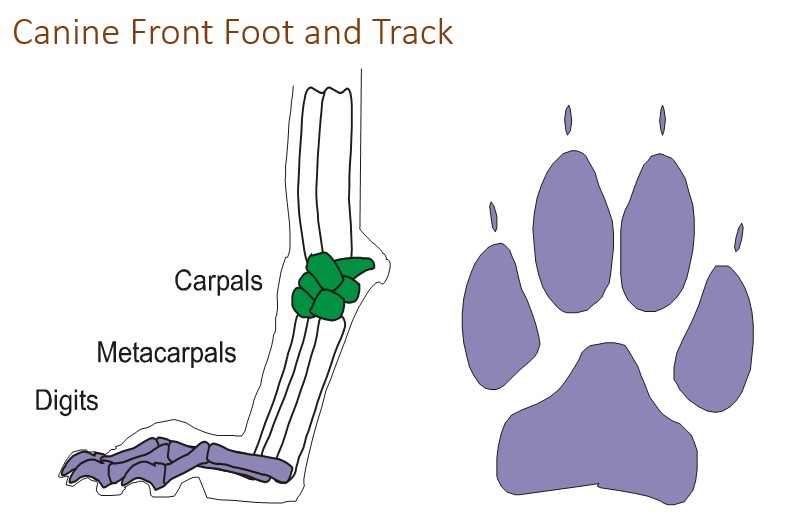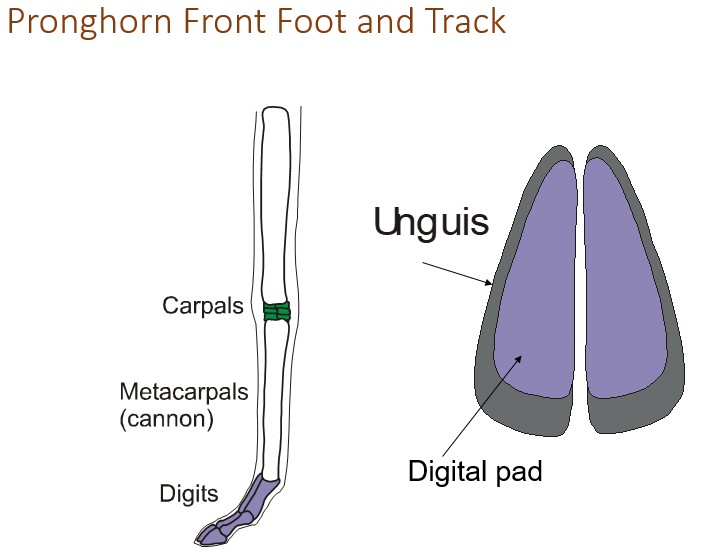Animals have evolved various form of locomotion to get around. Terrestrial animals have common three types of locomotion: plantigrade, digitigrade, and unguligrade. You can see an animal’s locomotion type in their tracks, and is a tool to help you narrow down what animal made that track.
Please see our previous blog post: Anatomy of a Track first, to become familiar with foot anatomy.

Plantigrade: Want an example of what plantigrade locomotion look like? Look at your own foot. Humans, primates, rodents, and many other animals are plantigrade. This is when both the digital, metacarpal pads, and carpal pads touch the ground when the animal walks.

However, many mammals are considered semi-plantigrade, where only one set of feet show all three features. The black bear is an example where the front foot has digital, metacarpal, and carpal pads on the ground; but the hind foot only has the digital and metatarsal pads on the ground.


Digitigrade: Digitigrade animals only walk on their digits. However, in tracking we also refer to the larger palm pad behind the toes as the metacarpal pad Cats and dogs are a great example of digitigrade locomotion.

Unguligrade: The animals that have this form of locomotion are called ungulates, and include all hooved animals. Ungulates walk on the very tip of their toes and are protected by a hard hoof called an unguis.

Preview image source: Animal Diversity Web
